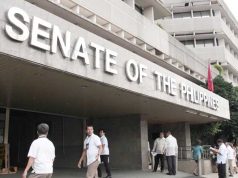KEEPING monetary policy tight in anticipation of higher commodity prices due to El Niño and rising crude oil costs may no longer be appropriate, according to economists.
“The BSP has long pledged to be data-driven in its decision making, a trait that almost all central banks would like to live by. However, given that monetary policy operates with a lag, BSP’s actions are data-driven but also forward looking,” Nicholas Antonio T. Mapa, Senior Economist of ING Bank-NV Manila, said in an e-mail.
“With inflation currently within target and by all accounts seen to dip further (BSP’s forecast is for inflation to be at 3.0 in 2019 and 2020), keeping a tightening stance at a time that inflation is projected to fall may not be appropriate for much longer,” Mr. Mapa said.
On Friday, BSP Governor Benjamin E. Diokno said in a briefing that the current monetary policy “remains appropriate given the confluence of easing inflation and firm growth dynamics.”
Mr. Diokno reported that headline inflation was maintained year-on-year at 3.8% in the first quarter of 2019, while it has decreased from 5.9% in the fourth quarter of 2018.
Food inflation for the period declined to 4.1% from 5% in the first three months of 2018, and was also lower than 7.7% recorded in the fourth of quarter of 2018.
For non-food items, inflation was 3% in the first quarter, up from 2.6% a year earlier and was lower than the 3.9% in the fourth quarter.
“The BSP knows that further risks can emerge from prolonged El Niño weather condition and higher-than-expected global oil and food prices. For 2020, the risks lean toward the downside amid a slowdown in global economic activity,” Mr. Diokno said.
“Thus, the BSP will remain data-driven at all times in our policy decision-making and our actions will be determined by our inflation outlook. The BSP remains focused on safeguarding and promoting price stability conducive to a balanced and sustainable economic growth,” Mr. Diokno added.
Mr. Mapa said no longer necessary to combat cost-push inflation using monetary tools as the central bank has limited capacity to do so.
“Although the BSP has flagged risks to the inflation outlook in El Niño crop damage and possible oil price spikes, these two reside on the ‘cost push’ side of the fence, something the BSP has long admitted in the past as having limited capability of addressing,” Mr. Mapa said.
“With the RTL (Rice Tariffication Law) in tow, fighting off cost-push inflation with monetary tools should be a thing of the past,” Mr. Mapa added.
“BSP’s price stability objective oftentimes garners all the attention but what is oftentimes overlooked is the reason behind championing price stability: to provide an environment conducive for economic growth.”
“With the inflation objective well in hand and economic growth seen to take a substantial hit from the budget delay and the BSP’s own aggressive 175 bps tightening cycle, Governor Diokno and the rest of the Monetary Board will likely need to weigh the nominal inflation target and the reason they strive to keep prices stable in the first place,” according to Mr. Mapa.
Michael L. Ricafort, Economist at the Rizal Commercial Banking Corp. (RCBC), noted that banks in other developed countries have become dovish, which led to slower economic growth resulting in lower global inflation.
“Central banks in the US and in other developed countries have become more dovish/ accommodative, resulting in declines in their government bond yields, mostly to the lowest level in two to three years (some developed countries even have negative long-term interest rates/government bond yields, such as Germany/other European countries and amid slower global economic growth and outlook,” he said.
“Slower global economic growth and outlook have fundamentally led to lower global inflation that, in turn, may support more dovish/accommodative monetary policy that lead to lower interest rate benchmarks,” Mr. Ricafort added.
Meanwhile, global economic information provider IHS Markit said that the Philippines is projected to have rapid economic growth in the medium term, and is poised to have an upper middle-income, noting the boost in infrastructure from the government’s Build, Build, Build program, strong remittances and the IT-BPO (Information Technology — Business Process Outsourcing) as one of the dynamic sectors.
In a report by IHS Markit Asia Pacific Chief Economist Rajiv Biswas, the Philippines is expected to reach per capita gross domestic product exceeding $4,000 which would push it into the ranks of upper-middle income developing countries, according to classifications of the World Bank.
“The Duterte administration has been pressing ahead with a number of significant economic reforms during the early years of its term in office, including a major push to improve public infrastructure and the Comprehensive Tax Reform which is expected to boost revenue growth,” Mr. Biswas said.
“With a total population estimated at 107 million in 2018, the Philippines is also one of the most populous countries in Southeast Asia and as per capita GDP levels rise above the upper middle-income threshold, this will create an increasingly substantial consumer market that will support the growth of the nation’s manufacturing, services, and construction industries,” Mr. Biswas added.
Mr. Biswas noted that the long-term outlook for the Philippines is “very positive” as total GDP is expected to double to $672 billion by 2026 from $330 billion in 2018, and that the country is forecast to become one Asia’s trillion-dollar-economies by 2032 with per capita GDP around $8200 by that time. — Reicelene Joy N. Ignacio



